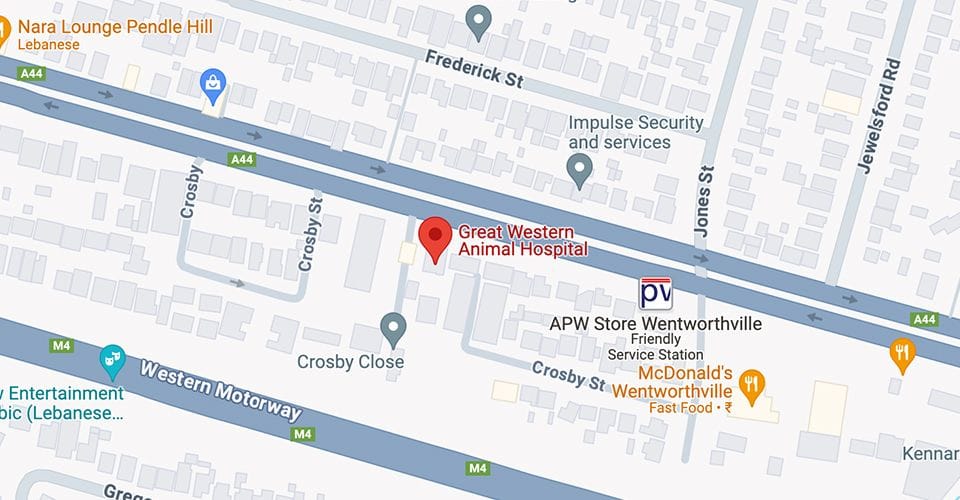Hypothyroidism in Dogs
)
How does hypothyroidism affect dogs?
Your dog’s thyroid gland
The thyroid gland is responsible for the production of thyroid hormones. It is located in a dog’s neck and forms part of the endocrine system, which regulates the body’s processes via chemical messengers called hormones.
The primary hormones produced by the thyroid are called T4 (AKA thyroxine) and T3 (AKA triiodothyronine). These hormones are responsible for the regulation of metabolism, growth, heart function and tissue maintenance; this can affect a dog’s energy levels, weight, fur colour and fur thickness.
How does hypothyroidism affect a dog’s thyroid gland?
Hypothyroidism refers to a condition in which the thyroid gland is underactive, producing less T3 & T4 than is needed. This should not be confused with hyperthyroidism, which refers to the overproduction of these thyroid hormones. Hypothyroidism can be congenital (meaning a dog is born with it) or acquired (most commonly). There is a range of causes, but the most common is an immune system dysfunction, where the dog's immune system starts to attack its own thyroid gland!
This can affect a dog’s metabolic rate, leading to a loss in energy and changes in their coat (in thickness and colour), as well as difficulty in regulating body temperature.
Hypothyroidism is most commonly seen in middle-aged to older dogs (average 4-10 years old). It more commonly affects medium to large breeds, such as Golden Retrievers, Cocker Spaniels, Dachshunds, Great Danes, Miniature Schnauzers and Poodles.
Is Hypothyroidism dangerous for dogs?
More severe effects of hypothyroidism can include abnormal nerve/nervous system function, so any signs should be investigated promptly where possible. However, hypothyroidism isn’t uncommon in dogs and can often be easily managed. When pet owners begin to notice signs of hypothyroidism, they can contact their local vet for an accurate diagnosis, and for advice on treatment.
Hypothyroidism symptoms in dogs
Often early warning signs of hypothyroidism in dogs will be indicators of the reduced metabolic rate - for example, your dog may start to gain weight, become lethargic, and seek out warm places in your home instead of their usual favourite spots.
Along with changes in behaviour like energy levels and seeking warm places, the most common symptoms of hypothyroidism in dogs include:
A change in coat colour (dullness)
Excessive hair shedding or thinning (unaccompanied by redness or rashes)
General lethargy and disinterest in physical activity
Weight gain (usually without an increase in appetite)
Reduced ability to tolerate the cold (visible in shivering and seeking warmth)
Increased susceptibility to skin and ear infections
How is hypothyroidism diagnosed and treated in dogs?
How to tell if your dog may be affected by hypothyroidism
Taking your pet to the vet for regular health checkups is recommended to detect and monitor the early stages of conditions like hypothyroidism.
Because symptoms of hypothyroidism are broad and can be associated with numerous medical conditions, your veterinarian may follow up with lab tests to check your pet’s hormone levels (e.g. total T4 levels). Often a combination of baseline thyroid values (e.g. total T4 levels) and secondary thyroid tests are needed for a diagnosis of hypothyroidism - this is because a low total T4 in itself can be due to other illnesses/medications, so further testing is needed to confirm true hypothyroidism.
If results show that your pet may be affected, your veterinarian can then recommend any further diagnostic tests, and a treatment/management plan.
How is hypothyroidism treated in dogs?
Hypothyroidism isn’t directly curable, but it is often easy to manage with the help of a prescribed management plan.
This plan commonly includes ongoing supplements of thyroid hormones, and periodically monitoring the thyroid hormone levels in the blood. With treatment, it is common that dogs will regain their energy, ability to regulate temperature, and their coat colour and thickness.
Your treatment plan may vary, and as your pet ages and develops more of a tolerance to the thyroid replacement, the required dosage could change periodically too. Because of that, if your pet is taking hormone supplements, we recommend maintaining your regular check-ups every six months with your local vet.
Continual communication with your veterinarian is the best way to help treat and manage your pet’s condition.
What to do if you think your pet may be affected by hypothyroidism
If your pet is showing signs of hypothyroidism, is acting unusually, or seems generally unwell, please don’t hesitate to call our friendly reception team for a check-up.
Hypothyroidism is often easy to manage once diagnosed and it’s very common that pets can return to their day-to-day activities once on their recommended treatment plan.
Our surgery offers a wide range of in-house pet services to pet owners including blood tests in both our hospital laboratory and external laboratories. We strive to deliver accurate results as quickly as we can to help pets return to their happy day-to-day lives.
| Tags:DogHealth AdvicePet Surgery |
)







